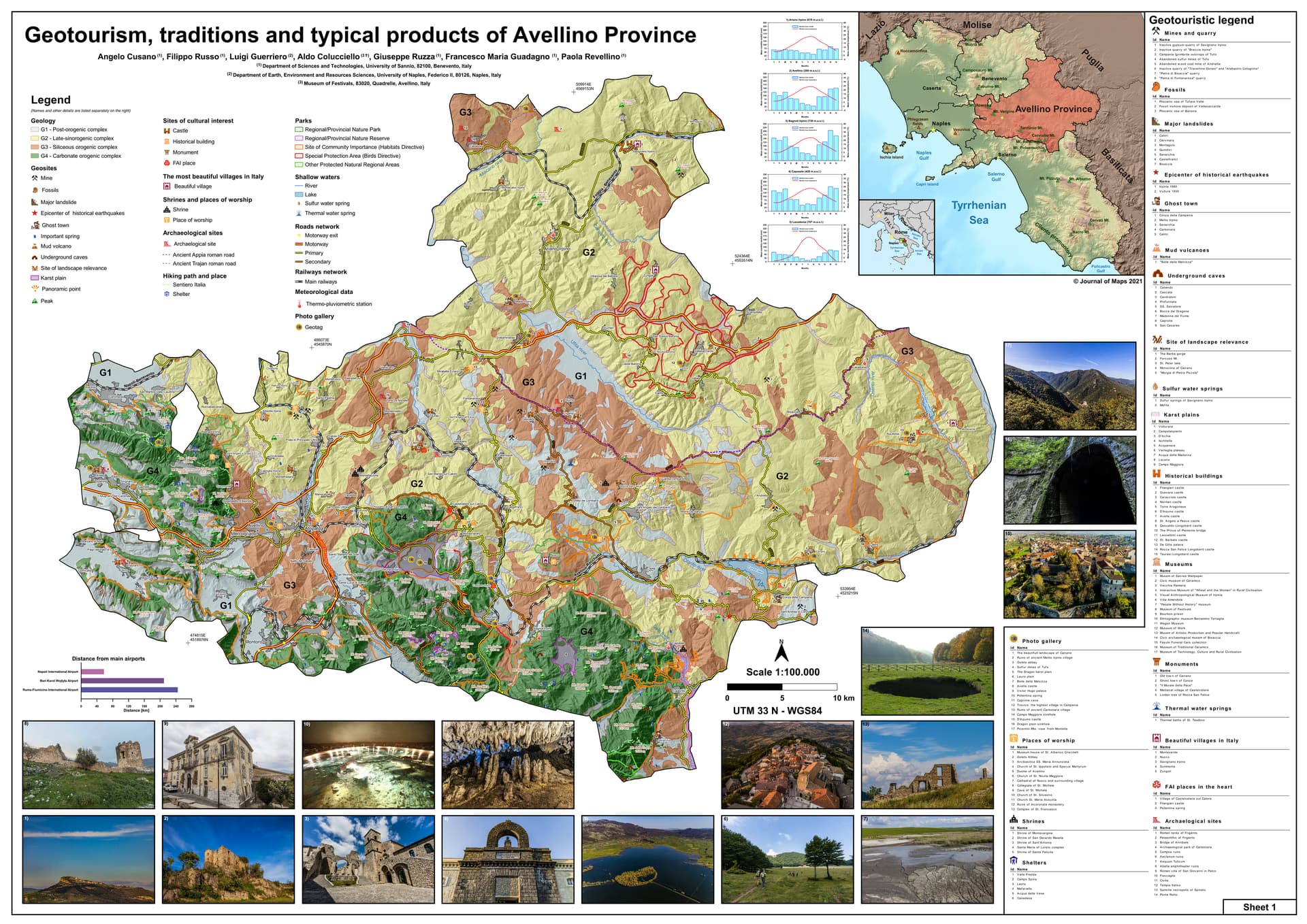
ABSTRACT
Geotourism is a form of nature-oriented tourism devoted to the knowledge and understanding of landscape forms and geological processes; flora and fauna and cultural, historical and human heritage. The great geological and morphological variability of Avellino Province, also called Irpinia, in southern Italy makes this province of particular interest for geotourists. Irpinia has a unique set of geosites, sites of cultural interest, archaeological sites and natural parks. Additionally, since ancient times, it has been a transit route between the Tyrrhenian and Adriatic Seas and, as in all countries of the Mediterranean area, it was dominated by different races, peoples and cultures that contributed to developing its cultural identity and heritage, including its food and wine. Indeed, some Irpinian products were already known and commercialised in Roman times, including wine and olive oil. On this basis, we propose a map showing the characteristics of Avellino Province, including sites of geological, historical-archaeological and cultural value. The map will contribute to a better understanding of this province from a geotourism perspective and might guide tourists through knowledge of Irpinia.
Carta: https://www.tandfonline.com/doi/suppl/10.1080/17445647.2021.2004941?scroll=top
DOI: https://doi.org/10.1080/17445647.2021.2004941
Autori: Angelo Cusano, Filippo Russo, Luigi Guerriero, Aldo Colucciello, Giuseppe Ruzza, Francesco M. Guadagno & Paola Revellino
This is an Open Access article distributed under the terms of the Creative Commons Attribution License (http://creativecommons.org/licenses/by/4.0/), which permits unrestricted use, distribution, and reproduction in any medium, provided the original work is properly cited.